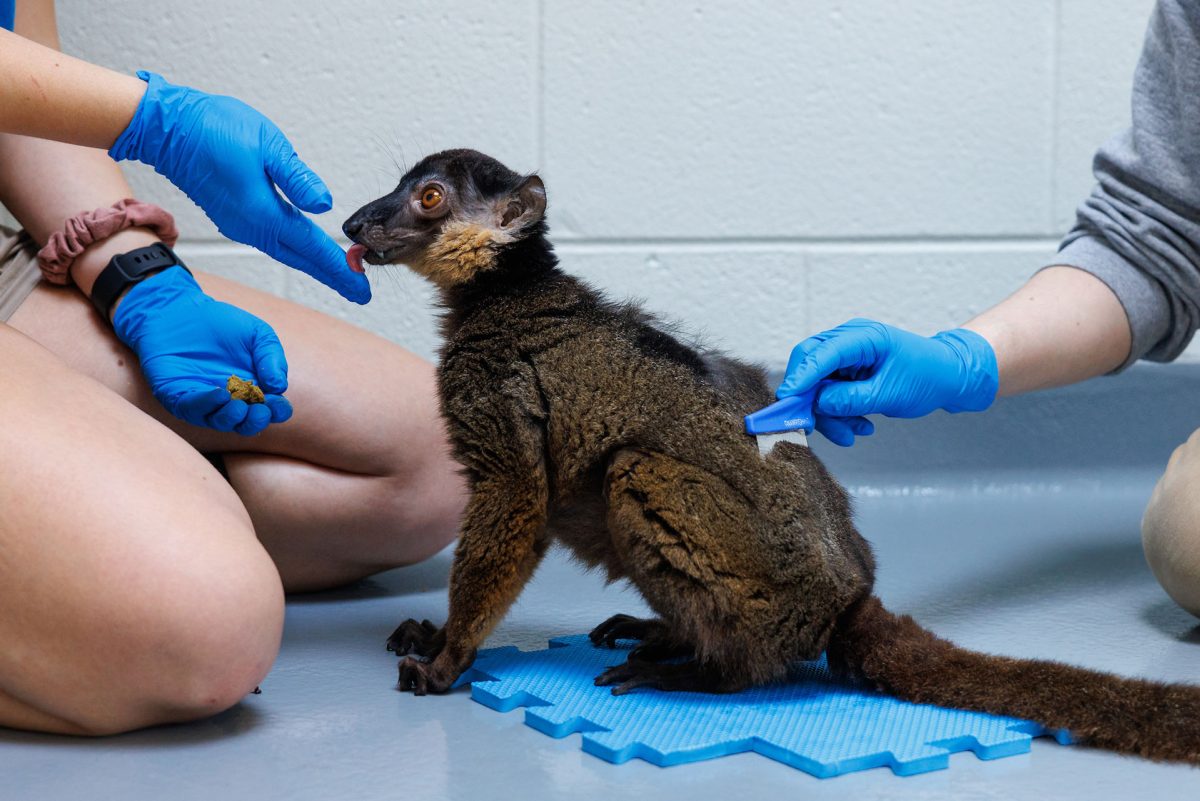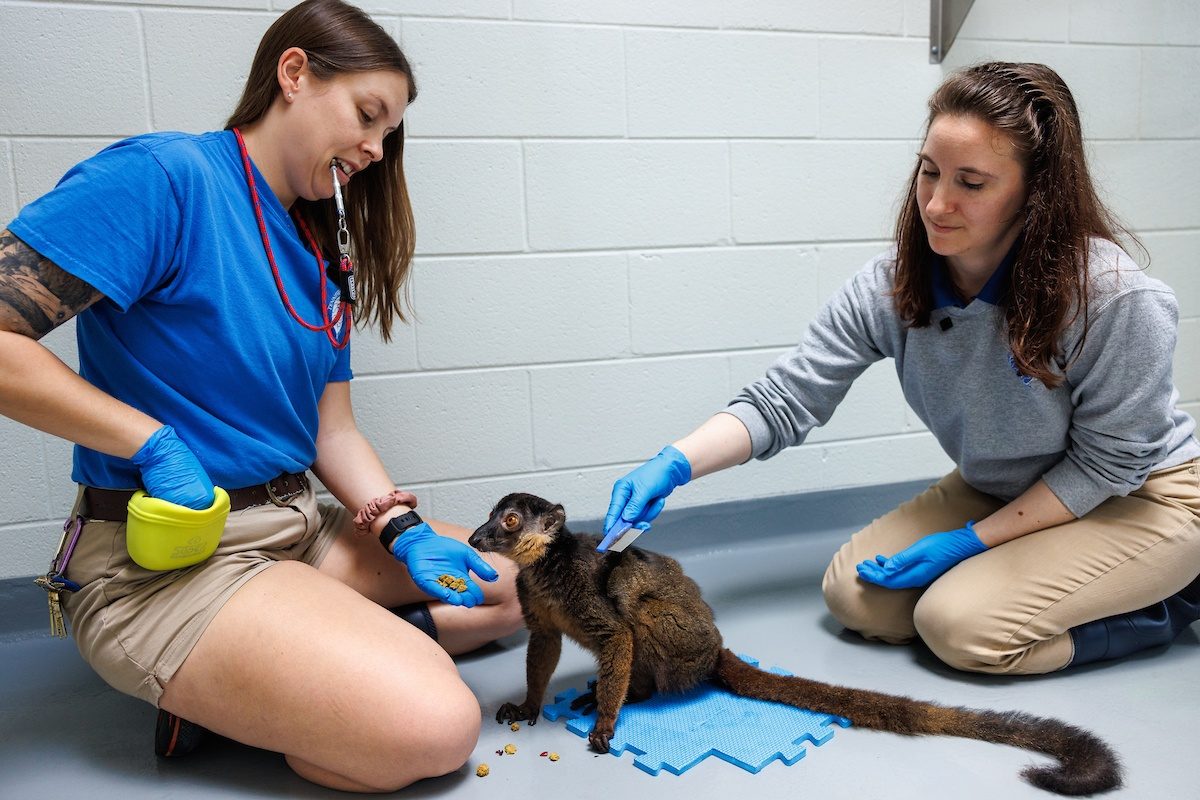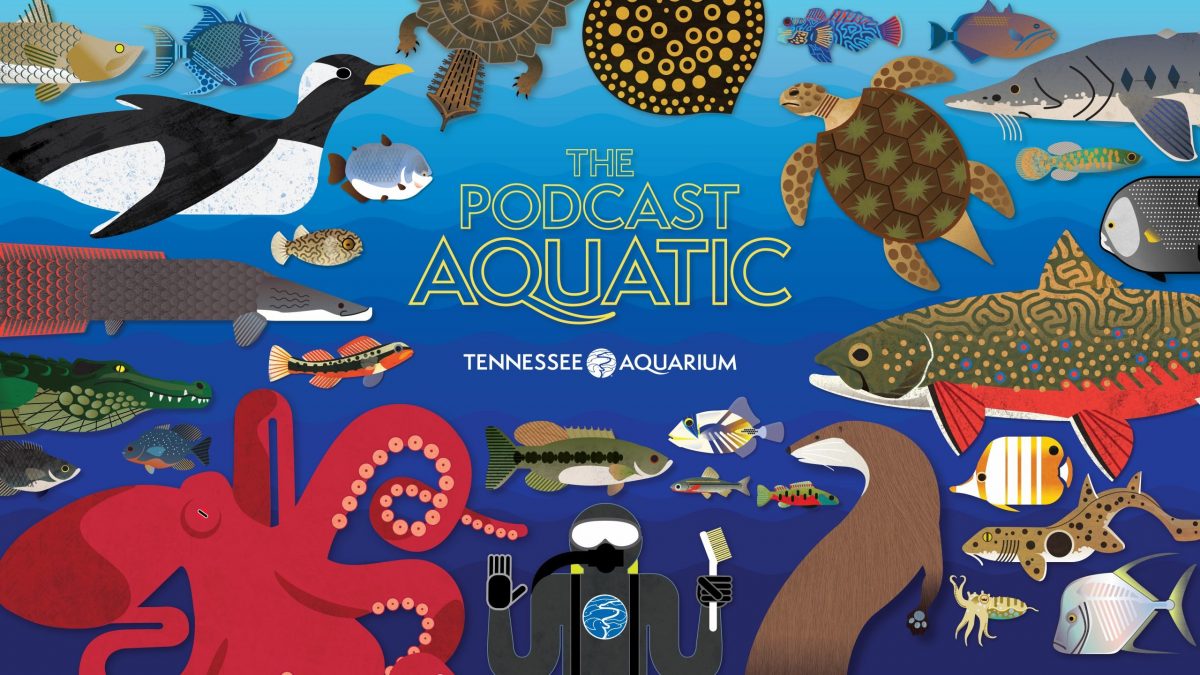The sudden loss of the Aquarium’s female Red-collared Brown Lemur, Jessie, in January was felt keenly by the Aquarium’s lemur team and veterinary staff. As difficult as Jessie’s death was for the humans who cared for her, it has even more strongly impacted her mate, John.
Groups (conspiracies) of lemurs, including Red-collared Brown Lemurs, rely heavily on one another for foraging, rearing their young, warmth, and protection.
“They’re highly, highly social,” says Animal Care Specialist II Samantha Grote. “They don’t socialize the same way you and I do, but they’ll greet each other, they groom each other, and they rely on each other.”
Knowing how important it was to find John a new friend quickly, the lemur team immediately reached out to the Association of Zoos and Aquariums Species Survival Plan (SSP) coordinator for Red-collared Browns in search of a new mate, but the SSP coordinator had some unfortunate news about the short-term prospects for finding John a companion.
Red-collared Brown Lemurs are endangered in the wild, and they are rarely exhibited at zoos and aquariums in the United States. The SSP helps ensure the robustness of animals in human care to safeguard species against the possibility of extinction in the wild. For animals with limited populations at zoos and aquariums, however, it can be challenging to respond quickly to the loss of an individual.
“Unfortunately for John this time around, Red-collared Browns are so rare in professional institutions that there’s not very many of them,” says Senior Animal Care Specialist Maggie Sipe. “There are no other ones available to come keep him company right now.”
Faced with the prospect of a potentially long wait for another companion for John, the lemur team knew they needed to act quickly and decisively to ensure his wellbeing in the meantime.
“We knew we had to go into overdrive with training and enrichment to make sure we could make him as comfortable, mentally stimulated, and well taken care of as we could,” Sipe says.
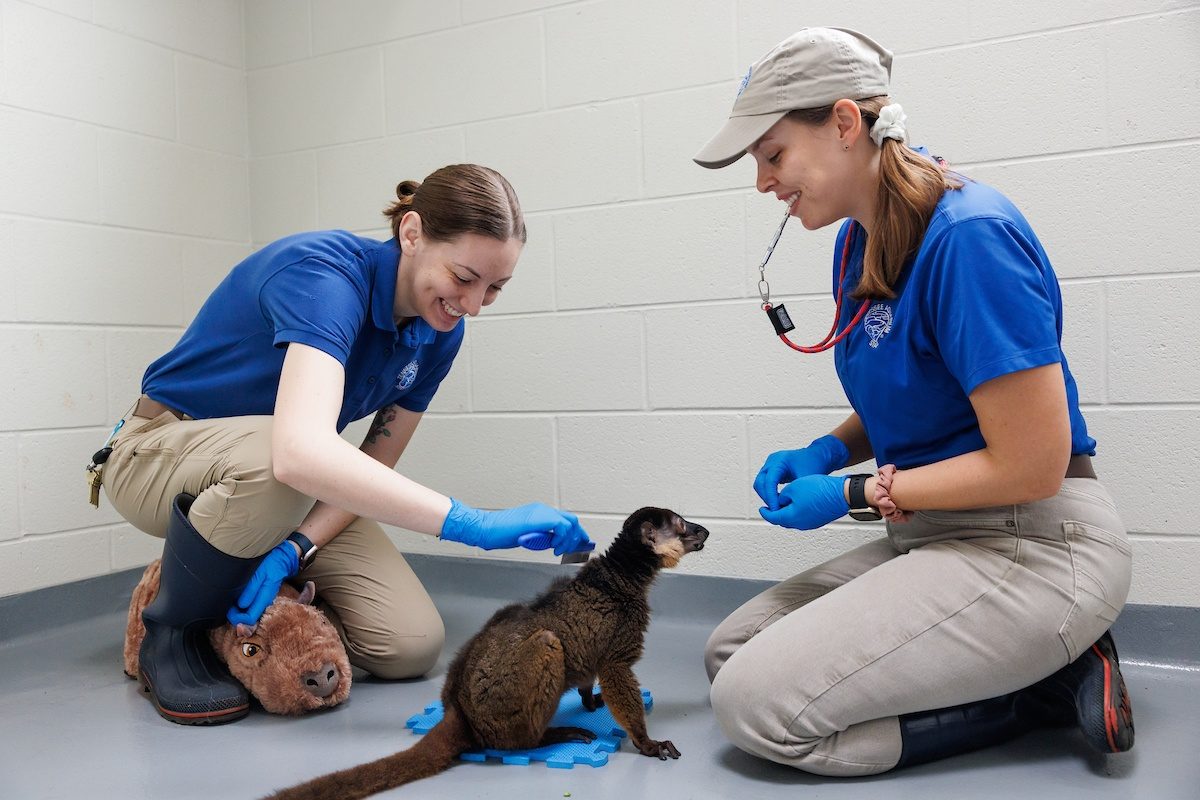
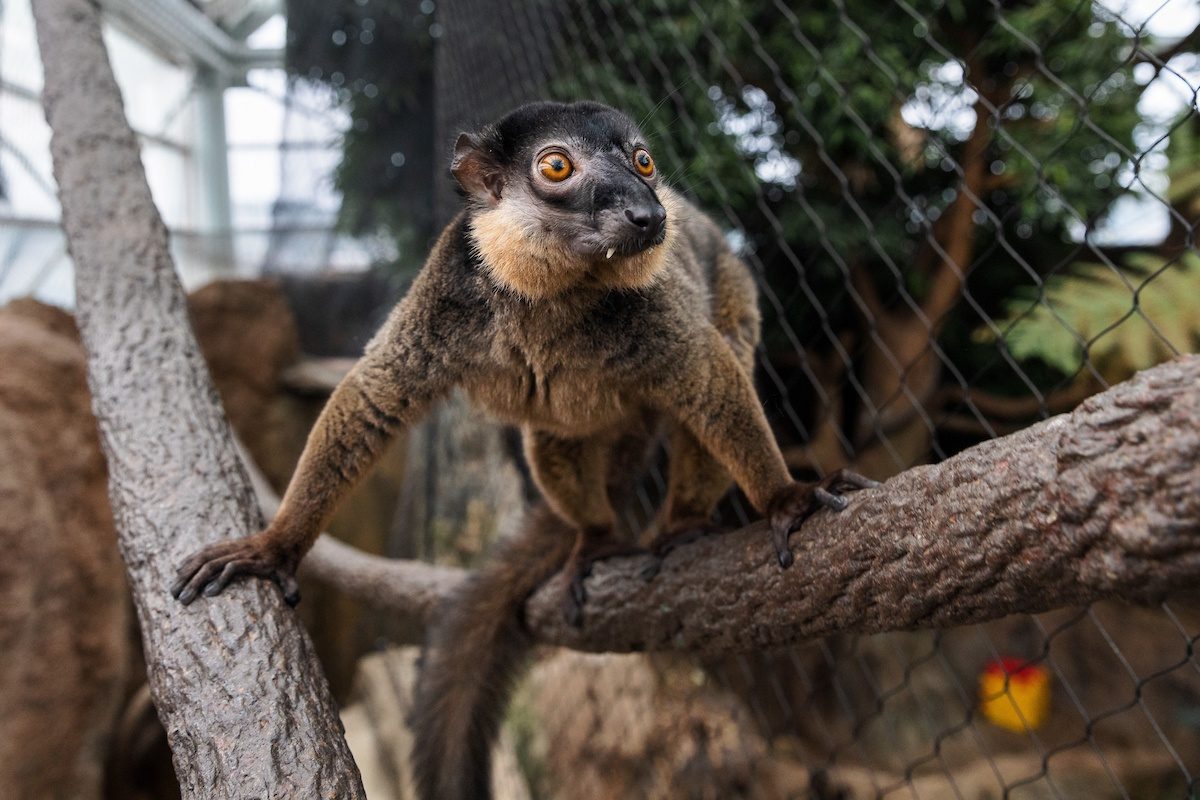
Without Jessie around, John could not reach the fur on his back while grooming himself. Recognizing how crucial social grooming is to lemurs, the team focused on creating a training program that would allow them to step in and fill this role for John until a companion could be found.
Fortunately, they already had a solid foundation to work with. John is trained to move to stations and enter his kennel on his own, but they needed to build on those existing relationships and gain even more trust before John would allow them to touch him.
“Relationship building is huge in keeper-animal relationships, and a big part of that is respecting that they’re a wild animal,” Sipe says. “We get the question all the time: ‘Oh, they’re so cute. Do you pet them? Do you hold them?’ Our trust with them is based on respecting that boundary.”
When teaching a new behavior, it takes slow, steady, and consistent training sessions to make measurable progress. The team could only briefly touch John with the grooming brush in their first session. Through positive reinforcement with lots of yummy treats and mutual respect built between animal and trainers, however, they gradually made progress until John was at ease and even happy to receive regular grooming from the humans he trusted.
During recent training sessions, John has begun to show more interest in the grooming activity and less in the snacks the trainers use as positive reinforcement. This is a clear indication that he’s now actively seeking out interaction with his caretakers.
“We’re really proud of what we’ve done in just a matter of weeks,” Grote says.
As with all training programming, John’s participation in the grooming sessions is entirely voluntary. The team never, ever forces his involvement if he indicates any aversion to taking part.
“Part of the trust is if he tells us he doesn’t feel like having it done today, then we don’t do it,” Sipe says.
While keeping John well-groomed is essential to his wellbeing, the activity does more than just maintain his hygiene. It also serves as important social and mental stimulation.
The team is focused on walking the line between caring for John without making him bond too closely to humans. The caretakers agree the best thing for his wellbeing is to be with other lemurs, so they must balance meeting his needs without crossing any boundaries that might make it difficult to integrate him with another Red-collared Brown Lemur in the future.
In the meantime, John is living with other lemurs — two Ring-tailed Lemurs, Sprite and Snickers — but while it’s good that he’s not alone, the benefits of this cross-species interaction aren’t the same as being with another of his kind. Sprite and Snickers don’t groom or ball with John like they would if the group were solely comprised of Ring-tailed or Red-collared Brown Lemurs.
So the responsibility to meet John’s social needs continues to fall on his human caretakers, but the ramping up of John’s training has already shown great success. Both Sipe and Grote say they take heart in how well John is doing. To them, his acceptance of their surrogate socialization is a testament to his relationship with them and the intense work they’ve put into ensuring he is living his best possible life until another Red-collared Brown arrives to fill the hole left by Jessie.
